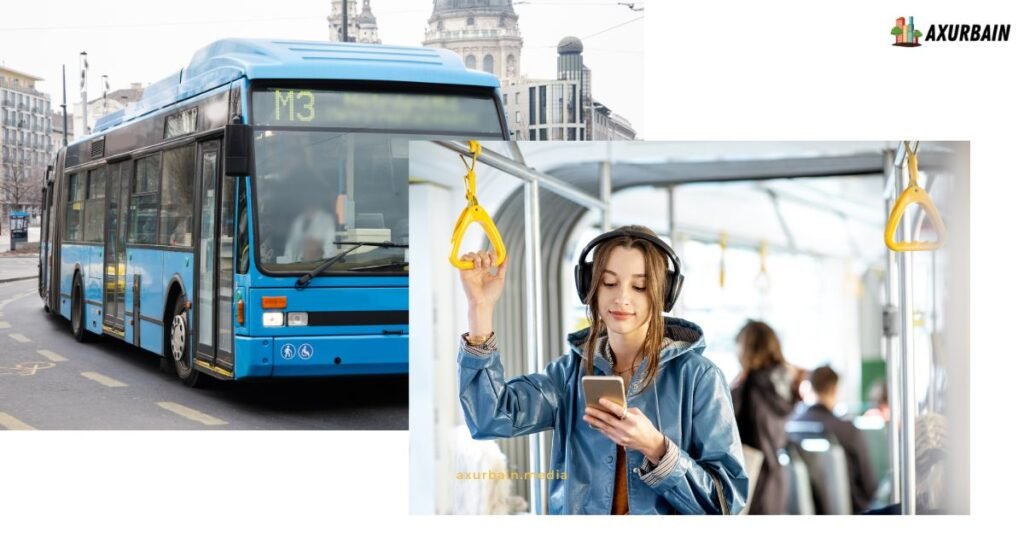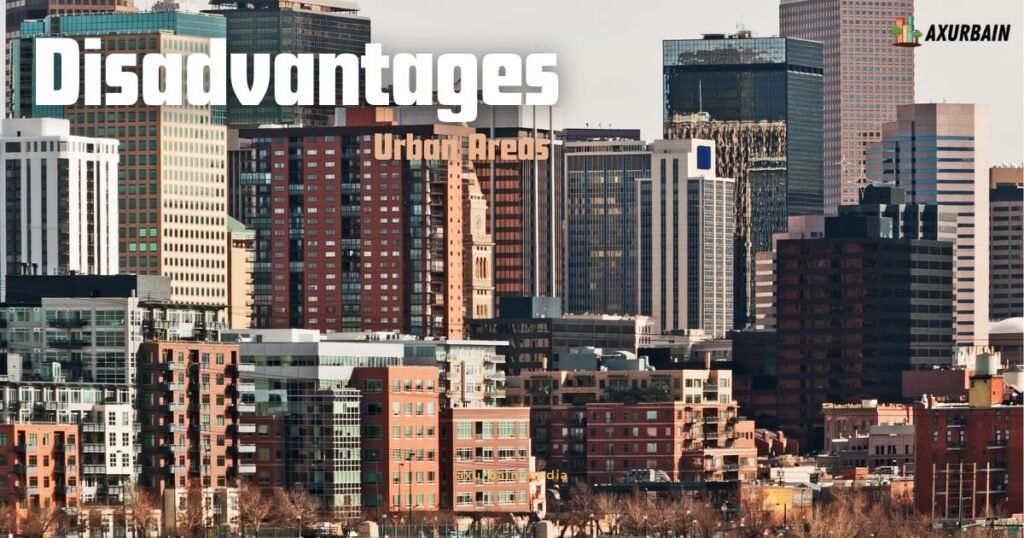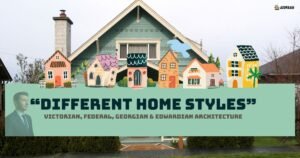Urban areas are places where people live close together, like big cities, towns, or metropolitan regions. These places are filled with tall buildings, busy streets, and different kinds of businesses.
Everything in this world is due to a specific reason. People move to cities for many reasons. Some are looking for better jobs, some want good schools and colleges, and others enjoy the exciting lifestyle, shopping malls, restaurants, events, and all the things that are harder to find in smaller towns.
In this post, we’ll look at the advantages and disadvantages of city life. By the end, you’ll have a clear picture of what makes urban living good and not so good.
Before examining the pros and cons of living in urban areas. Let’s discuss positive things first.
Table of Contents
ToggleAdvantages of Living in Urban Areas
Since the 18th and 19th centuries, when human development and urbanization began, numerous benefits have accrued to urban areas. You can take a look at developments which help urbanization grow further.
The advantages of living in the city are listed below.
1. Better Quality Roads and Well-Built Houses
One of the most significant benefits of living in cities is the extensive infrastructure. Urban areas usually have stronger, wider, and better-maintained roads compared to rural areas. Good roads mean less travel time, safer driving, and easier access to schools, offices, hospitals, and shopping centers.
Cities also offer a wider range of housing options. From modern apartments to well-built homes, people can find housing options that fit their lifestyle and budget. Many urban homes come with electricity, clean water, internet, and even backup power systems. This makes daily life more comfortable and convenient.
In short, good roads and strong housing are a big reason why people prefer living in cities. They make moving around and living day-to-day a lot easier.
2. Better Public Transport

Another significant advantage of city life is public transportation. In most urban areas, people don’t always need a car because they can get around using buses, trains, subways, or even ride-sharing apps. This saves money on fuel, parking, and car repairs.
Public transport also makes life more convenient. For example, students can take the bus to school, workers can catch the train to their office, and families can use metros or trams to visit shopping centers or parks. In many large cities, public transportation runs 24/7, allowing people to have more freedom to move around at any time.
Besides, using public transport helps reduce traffic jams and lowers pollution when more people share one bus or train instead of driving separate cars.
In short, good public transport makes city life faster, cheaper, and more connected.
As I always said, examples make it easier to understand. Take Mexico City as an example.
The city built special Metrobus lines that made commuting faster and less stressful. Line 4 even helped bring new life to the historic center by turning some busy streets into safe spaces for buses, bikes, and pedestrians. Along with a top bike-share system and smarter parking rules, these changes improved daily travel and made the city cleaner and more enjoyable.
According to the Institute for Transportation and Development Policy.
3. Easy Entertainment Cinemas, Restaurants, etc
Cities are not just places to live; they are the cultural and entertainment hubs of the world. Most of the media, arts, and technology industries are based in cities, which is why you’ll always find theaters, cinemas, concert halls, and restaurants close by.
It makes sense, too. Today, more than half of the world’s population (approximately 53%) lives in cities, and experts predict that this will rise to almost two-thirds by the middle of this century. According to the United Nations.
With so many people living in urban areas, cities naturally become the center of culture, technology, and communication.
That’s why the latest movies, global food trends, music festivals, and even tech-driven entertainment usually appear in cities first. Urban life makes it easier to experience new things and stay connected to the modern world.
4. Healthcare Facilities
One of the biggest advantages of living in urban areas is better healthcare. Cities typically have large hospitals, modern clinics, and specialized doctors who can treat various illnesses. This means people can get the right care without traveling far.
Another plus is faster emergency response. Ambulances, fire services, and trauma centers are more easily accessible in cities, which can save lives during accidents or sudden health emergencies.
Urban areas also tend to adopt new medical technologies more quickly. For example, city hospitals often get advanced machines, digital health systems, and modern treatments before rural areas do. This is partly due to competitive pressures, as new private hospitals and health companies are pushing older facilities to improve (NIH).
At the same time, population growth makes healthcare even more important. In South Asia, for example, the number of people living in cities almost doubled to 645 million by 2020 and is expected to reach 1.2 billion by 2050 (ScienceDirect). With the increasing number of people moving to cities, urban healthcare systems will play a crucial role in maintaining population health in the future.
5. Great Mixup of Culture and Ethnicity
Cities are always open for culture learners. A great combination of different races, religions, and colors. Take a look at some of the benefits.
- Cultural Diversity: Cities bring together people from different regions, religions, and backgrounds. This creates a mix of traditions, languages, and lifestyles that make urban life rich and vibrant.
- Learning and Tolerance: Living in a multicultural city helps people develop a deeper understanding and respect for other cultures. Children grow up learning new ideas, and adults can build friendships and professional connections with people from diverse backgrounds.
- Cultural Hubs: Many cities are home to museums, theaters, art galleries, and cultural centers. These spaces reflect the mix of cultures and allow communities to share their heritage with others.
6. Better Education

One of the biggest strengths of urban areas is access to quality education. Cities usually have more schools, colleges, and universities, providing families with better options for their children’s education. They also attract skilled teachers, professors, and research centers, which means students get exposure to advanced knowledge and career opportunities.
Education in cities doesn’t just help individuals—it shapes the future of the whole community. Researchers have found that the number of educated workers is a strong indicator of whether a city will grow or stagnate. For example, places that struggled in the past, like the “Rustbelt” manufacturing cities of the 1980s, often fell behind because they lacked enough skilled workers. According to the NBER organization.
On the other hand, cities with a higher proportion of college graduates tend to attract businesses, create jobs, and continue to move forward.
In simple words, education in urban areas is not only a personal advantage but also a key factor in making cities stronger, smarter, and more successful.
7. Job Opportunities
One of the main reasons people move to cities is the wide range of economic opportunities. Urban areas have more jobs because they attract industries such as finance, technology, healthcare, and education. This variety enables people to find work that matches their skills and also facilitates career growth over time.
Cities are also places where businesses thrive. Entrepreneurs often prefer urban areas because they can connect with investors, meet new partners, and reach a larger customer base. Networking events, trade shows, and shared working spaces make it easier to exchange ideas and build successful ventures.
In short, city life opens doors to better employment opportunities, higher incomes, and stronger career growth compared to rural areas.
Disadvantages of Living in Urban Areas

Every picture has two sides. Many people overlook the pros of city life. Urban areas also have drawbacks. Take a look at them one by one.
1. High Cost of Living
One of the biggest challenges of city life is the high cost of living. Everyday expenses, such as housing, food, healthcare, and transportation, are usually significantly higher in urban areas compared to rural towns. This makes it harder for many families to balance their income with the expenses they need to cover each month.
Housing is the clearest example. According to U.S data, the average home value in cities is noticeably higher than in rural areas, around $190,000 compared to about $151,000 in the countryside. Monthly mortgage payments also tend to be steeper in urban areas. While rural homeowners spend roughly $1,271 a month, city homeowners pay closer to $1,561.
Interestingly, rural housing prices have been climbing faster in recent years, with a 36% increase immediately following COVID, compared to approximately 21% in urban counties. Even with this rise, though, owning or renting in cities remains more expensive overall. According to the Harvard report.
Beyond housing, urban residents also pay more for groceries, medical care, and transportation. For many people, salaries in cities often fail to match these higher costs, creating a gap between income and daily living expenses.
2. Overcrowding & Space Issues
Another common problem in cities is overcrowding. With so many people moving to urban areas, living space becomes limited. Many families end up in small apartments, and in some cases, several people have to share the same home. This can make daily life uncomfortable and reduce privacy.
Overcrowding also puts pressure on a city’s infrastructure. Roads get jammed with traffic, public transport becomes packed during rush hours, and basic services like water, electricity, and waste management struggle to keep up with demand. Schools and hospitals often face the same issue, with too many people relying on limited facilities.
As a result, even though cities promise modern living, the reality is that many residents face cramped housing and overstretched public resources, which can impact both their comfort and quality of life.
Urban planners are turning to micro-climate solutions like green roofs and community parks to make crowded cities more livable.
3. Pollution & Environmental Impact

One of the biggest downsides of urban living is pollution. Cities are packed with cars, factories, and people, which makes the air, water, and even the noise levels much worse than in rural areas. Traffic congestion is a daily reality, and with it come higher greenhouse gas emissions that harm both the environment and public health.
Air pollution is especially dangerous. Health experts report that it leads to around 7 million premature deaths every year worldwide, with most of these deaths happening in low- and middle-income countries.
From producing goods to disposing of waste, these processes put huge stress on natural resources. As a result, global waste levels are expected to hit 3.4 billion tons by 2050, adding further strain on already polluted urban environments. According to the world bank pollution report.
In short, while cities are centers of growth and opportunity, they also generate some of the most significant environmental challenges we face today.
4. Stress & Mental Health Challenges
Living in a city can be both exciting and stressful. Fast-paced lifestyles, long working hours, and crowded streets can take a toll on mental health. People deal with noise, traffic congestion, and the constant pressure to meet deadlines or keep pace with urban life.
Stress in cities is not just about being busy it can affect sleep, mood, and overall well-being. Studies show that urban living is linked to higher rates of anxiety, depression, and other mental health issues compared to rural areas. Even simple daily challenges, such as commuting on crowded buses or finding affordable housing, contribute to this pressure.
On the positive side, cities usually have better access to mental health resources such as therapists, support groups, and wellness programs. However, the fast pace and competitive environment still make managing stress a constant challenge for many urban residents.
Why is city Life the best 10 points – My Opinion
I have conducted extensive research and engaged in various urban innovation practices. I learn a lot and educate a lot. In my opinion, city life offers unique experiences that can’t be found anywhere else.
Here’s why he believes urban living is the best:
- Opportunities Everywhere – Cities are full of jobs and career growth opportunities across various industries, including tech, finance, healthcare, and education.
- Access to Quality Education – From top schools to universities and training centers, urban areas provide learning opportunities that help people grow.
- Advanced Healthcare – City hospitals and clinics provide specialized care, faster emergency services, and access to the latest medical technologies.
- Cultural Diversity – Cities bring together people from different backgrounds, creating rich traditions, foods, and festivals that make life exciting.
- Entertainment Options – Cinemas, theaters, concerts, restaurants, and malls are all just a short walk or ride away, making leisure easy and fun.
- Efficient Transport – Public buses, trains, metros, and bike-sharing programs make commuting simpler and reduce dependence on private cars.
- Social and Networking Opportunities – Meeting new people, connecting with professionals, and joining communities is easier in a bustling urban environment.
- Innovation and Technology – Cities are often at the forefront of digital innovation, smart city solutions, and architectural trends, giving residents access to cutting-edge services.
- Lifestyle Convenience – From grocery stores to gyms, banks, and cafés, everything is nearby, saving time and making daily life smoother.
- Urban Inspiration – Based on my personal experience, cities are full of stories, from impressive architecture to lively neighborhoods, that inspire creativity and personal growth every day.
We can say, “Urban life is a space where work, culture, and community meet and that’s what makes cities truly special.”
Rural Living and Urban Living Comparison
This is a huge debate. But I think it all depends upon your priorities.
Rural areas offer peace, open spaces, and a slower pace, while cities provide jobs, education, entertainment, and modern conveniences. Comparing the two helps people understand the trade-offs and decide which environment best suits their needs.
I won’t discuss it in detail. Take a look at Brad Simmons’ expert review in the video below.
Conclusion
Living in cities comes with many advantages, such as
- Better jobs
- Education
- Healthcare
- Entertainment
- Cultural diversity
At the same time, urban life presents challenges such as high costs, overcrowding, pollution, and stress. Rural areas offer peace, space, and a slower lifestyle but may lack opportunities and services.
Ultimately, the best choice depends on personal priorities and preferences. Some people thrive on the energy and convenience of city life, while others prefer the calm and simplicity of rural living.
Understanding both sides helps you make a choice that aligns with your lifestyle, goals, and overall well-being.
To gain deeper insights into urban living, architecture, and city life, follow expert guides from Axurbain.




